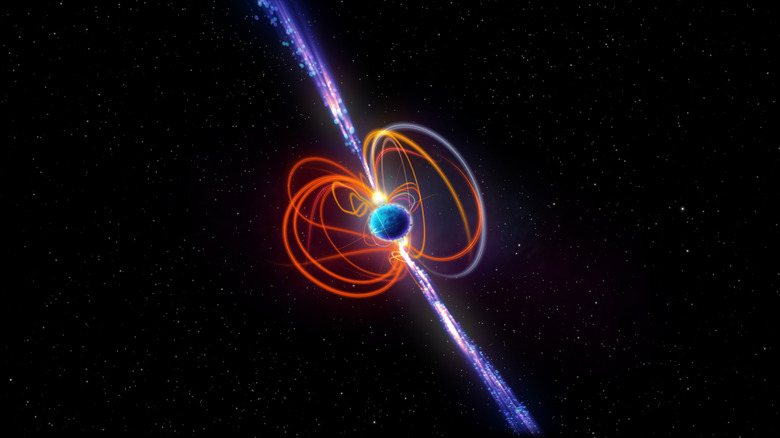This Bizarre Space Object Is Blinking Every 22 Minutes And No One Knows Why
Astronomers recently discovered a bizarre stellar object that seems to be blinking out a signal every 22 minutes. The discovery, made by researchers from the International Centre for Radio Astronomy Research (ICRAR) and published in Nature, could help us further understand a type of star called a magnetar.
The densest objects we know of are black holes, but second to these are neutron stars. These dense cores are what is left over after a massive star goes supernova and explodes. One subtype of neutron stars is called a magnetar, which is thought to have a powerful magnetic field and give off bursts of radio waves.
However, magnetars generally only give off radio pulses every few seconds. This object pulses every 22 minutes. When researchers first saw evidence of the object, they dug through older data to see if it had appeared before. They found previously unnoticed evidence of the same object going back decades.
"It showed up in observations by the Giant Metrewave Radio Telescope (GMRT) in India, and the Very Large Array (VLA) in the USA had observations dating as far back as 1988," said lead researcher Natasha Hurley-Walker. "That was quite an incredible moment for me. I was five years old when our telescopes first recorded pulses from this object, but no one noticed it, and it stayed hidden in the data for 33 years. They missed it because they hadn't expected to find anything like it."
A mystery wrapped in an enigma
The object, called GPM J1839−10, is located extremely far away, at a distance of 15,000 light-years. Not only is its pulse period of 22 minutes a puzzle but scientists are also perplexed by how it could be producing radio waves at all.
That's because only some magnetars produce radio waves. Others don't have a strong enough magnetic field to produce high-energy radio waves, and they fall below a threshold called the "death line." The recently discovered object is spinning relatively slowly, so it shouldn't be able to produce radio waves at all — and yet it is.
"And we're not just talking about a little blip of radio emission. Every 22 minutes, it emits a five-minute pulse of radio wavelength energy, and it's been doing that for at least 33 years," Hurley-Walker said. "Whatever mechanism is behind this is extraordinary."
Because there are so many open questions about this object, the researchers think that studying it could help us learn more about the physics of magnetars and how they form and evolve. The team is looking for more of these strange objects to find out more about them and to try to work out whether they are really magnetars with an unusually long period.
"This remarkable object challenges our understanding of neutron stars and magnetars, which are some of the most exotic and extreme objects in the Universe," Hurley-Walker said.

